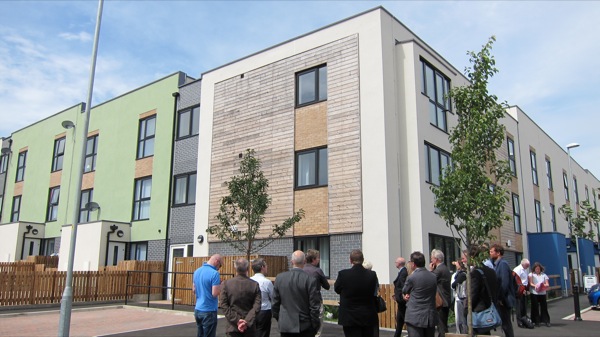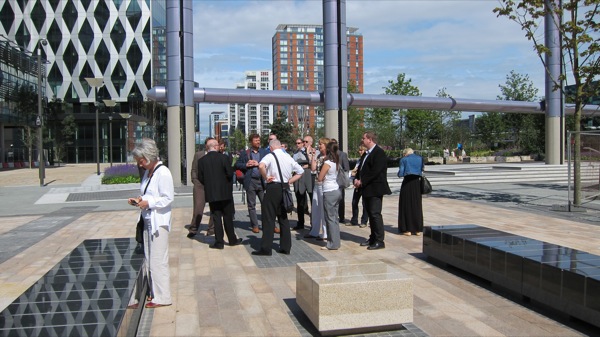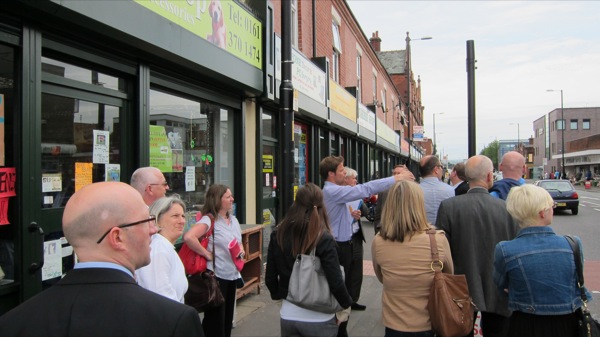Written by:
Hannah and I were invited to take part in an event arranged and run jointly by Architecture+Design Scotland (A+DS) and Centre for Local Economy Strategies (CLES) in Manchester. The event brought together council officers, practicing designers and representatives from Third Sector Organisations to build on the learning from a number of workshops A+DS and CLES have run on mixed use developments. The findings will be compiled in a report.
Setting the scene were Sarah Longlands (@sarahlongslands) and Neil McInroy (@nmcinroy) from CLES, and Diarmaid Lawlor from A+DS (@arcdessco). Here are some of the main points of their presentations and following discussions amongst participants, as well as our observations from the afternoon’s site visits to Openshaw, Ordsall, and MediaCity.
Incorporating a range of uses in the redevelopment of an area can be a strong contributor to good place making. Places with a broad mix of functions bring in a range of users, which can contribute to the resilience of that place. With a considered approach to the mix we can aim for a balanced, resilient environment that rests in itself physically, socially, and financially.
It is crucial that the integration of uses is a firm aim from the outset, and that it is followed through in the design of the physical spaces, linking up residential areas with the high street through cycle and pedestrian paths, considering multi-use of open spaces (parking lot as a community resource?) and creatively offering opportunities for people to meet and interact. Mixed use is not about proximity of functions, it’s thinking about how they can interact to create surplus – creative connections, ease of use, services people need.
Historically, the unique characteristics of a place have often been overlooked in the rush to create growth. However, there are plenty of examples of projects demonstrating that considered attention to the context – including working with people living there, understanding the history, and analysing the physical shape – contributes to generating positive outcomes. It is crucial that any kind of place strategy, whether anticipating growth or non-growth, is based on the context in which it operates and responds to available resources and qualities of the place.
The importance of strong, accountable leadership was considered a key ingredient, but who should lead processes of change? Should the public sector take the charge and set out a well-founded strategy and work to deliver it? Or should the public sector set a strategy and step aside to allow new ways of working and delivering projects, such as community organisations or social enterprises or multi-sector partnerships taking the lead?
Neil McInroy suggested seeing areas of change as a ‘petri-dish’: A place where we as influencers and stakeholders have the opportunity to set the conditions for things to grow organically. Changing the environment allows different things to grow. What are you going to grow today? And how do we create resilient, mixed-use places for the future?


